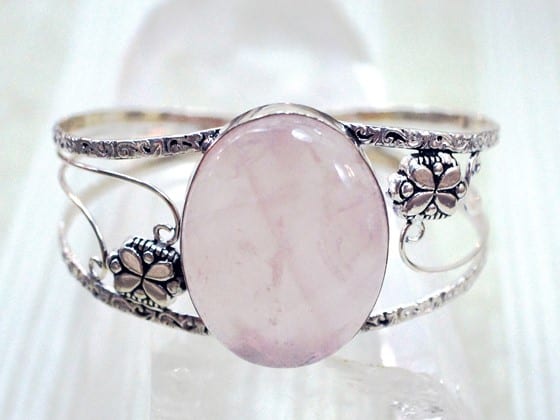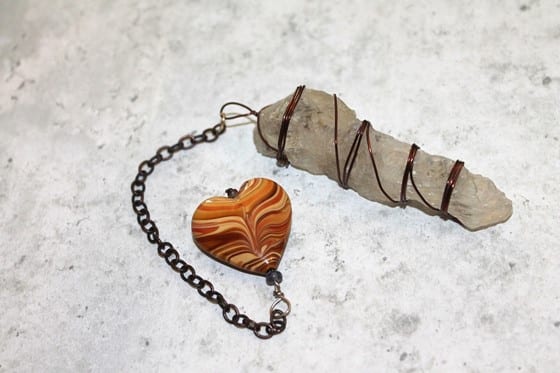
Are you looking to create a custom engagement ring or something unique for your home?
Professional lapidary services can be expensive. Luckily, there are a few ways to do lapidary work by yourself. It’s up to you!
We have outlined a few techniques and safety tips that make it possible for any hobbyist to polish and cut stones into beautiful custom jewelry.
What Is Lapidary?
Image Source: Pixabay
Lapidary is the art and science of cutting, polishing, and other techniques that involve work on precious or semiprecious stones, rocks, minerals, or other natural materials.
In some cases, it is possible to see the original piece of art in the finished lapidary piece.
The lapidary technique includes working with the natural surface of gems such as polishing, carving, inlaying, mounting, setting, wiring, and brazing.
A person using lapidary techniques creates something that is one-of-a-kind, and with a unique surface that reflects the master’s skills.
The lapidary technique is not just limited to rocks and minerals. A person can use virtually anything that has a faceted surface.
Origin of lapidary
Lapidary comes from the Latin word “lapis” which translates to “stonecutter” or “working with stone”.
Lapidary has its roots in ancient civilizations. The Egyptians started the lapidary techniques, and the Romans adapted them to create micromosaics.
There are several places that hold lapidary competitions where the lapidary community can learn and experience all that comes with the sport of lapidary.
Tools Required For Lapidary Work
Lapidary equipment is essential for beginners on their way to becoming a naturally skilled gemstone artisan.
Most beginners start crafting from scratch, using their own rock and their own slab saw to cut it. You could also try your hand at tumbling.
This is the easiest method and great for polishing rocks, as well as starting off with small rocks known as agates and jaspers.
Some of the basic equipment that is part of the lapidary process would be
gemstones or rock slabs, burnishing powder, silicon carbide, safety glasses(an absolute must), a trim saw or slab saw and more.
Popular Lapidary Techniques

Image Source: Pixabay
Designing or preparing the gemstone for the polishing process is not enough. We must also choose a machine that does it effortlessly.
Tumbling Technique
In lapidary, tumbling process is a common and traditional method of polishing rough gemstones. Tumbling gadgets are easily available, and these are designed to perform simple tasks like providing luster to the stone, removing small flaws, and also helps in cleaning stone dust.
Cabbing Technique
“Cabochons” are stones that are cut and polished with a convex, rounded top. Cabochons are typically fashioned into several symmetrical shapes, such as ovals, squares, rectangles, and hearts.
The most common use for cabochons is to make jewelry pieces. Cabochon include stones cut in many shapes and sizes, usually with a flat or a domed base.
Polished cabochons are often used as beads or pendants.
Faceting technique
Faceting requires highly specialized equipment and knowledge to safely facet gems- only qualified individuals should attempt to cut faceted gemstones.
New faceters often begin by practicing on inexpensive glass cut into shapes or on synthetic materials / man-made gems.
It is important to know that faceting is a very challenging and exacting art/science.
Faceting requires expertise regarding the nature of materials, proper safety equipment and tools, and skillful handling of stones.
Carving
Carving is an additional step that goes after faceting a gemstone. It is all about using the right equipment to give it a proper form after scraping away unnecessary portions of that material.
This process makes the most use of the rough gemstone’s design and removes excess weight.
It can add sparkle to a gemstone and also requires great skill and patience.
A cutter uses specific tools to craft a diamond with carved detail in it. Sometimes, there are mistakes in carving or in cutting, so using some backup plans like laser inscription can help prevent imperfections from being too visible to the naked eye.
Drilling
Drilling a gemstone is an important process which when done properly, will ensure that your gemstone has the best chance of surviving normal wear and tear.
When drilling into a gemstone, it is important to understand how quickly the drill will penetrate the surface and slow speeds cannot be overemphasized.
Taking Safety Precautions For Lapidary Work

Image Source: Pixabay
Wear safety glasses.
First, it’s important to remember that lapidary equipment is highly-sophisticated, and can cause serious injury if not used properly.
A full set of goggles and safety glasses are recommended for all lapidary work.
The goal is to make sure that you protect the eyes with goggles and safety glasses to avoid burns, abrasions, and other injuries.
Safety glasses are needed because of the extreme heat and light generated by the equipment.
Take elaborate and comprehensive training sessions.
A brief training on how to use equipment is very important.
Most professional lapidary work will require at least brief, guided safety lessons when using the equipment.
Extreme caution on the job while using lapidary tools and during the overall lapidary process are important for safety as well.
It is important to make sure that you do not use abrasive blasting for the work that you do, as it can damage the gemstones. It can harm the lapidary equipment, and cause damage in the surrounding work areas.
A light layer of non-toxic, lubricant sprays applied to tools is a good practice in using lapidary equipment.
The clean, porous feel of a lubricant gives it the ability to absorb the abrasive blasting. Hence, the lubricant coating gives a level of protection to the lapidary equipment while allowing it to remain sharp.
Use Protective Gear(without fail).
It is important that you always wear protective eyewear while using lapidary equipment. It is also important to use a helmet while using a stone tool.
A helmet offers protection for the face from shrapnel and abrasion, as well as from any dust that the stone tool may produce.
Some other tips include wearing a high quality glove. The thicker the glove, the less likely you are to lose your grip on the work equipment or stone.
By wearing a glove, you will feel less likely to have any abrasion or break the skin during the process.
Allowing the stones to melt with a torch during the process can also be very hazardous and should be done carefully, preferably under expert supervision. Stay away from marked danger zones.
Read labels carefully.
Try to use natural materials(wherever possible) for gemstone cutting and polishing. Natural materials tend to have a high “quality of touch”.
Are you aware that you can become sick from using the wrong coolants or chemicals on your lapidary tools? Lubricants made with paraffin or mineral oil, lard, and various emulsions of surfactants are the most commonly used chemicals.
However, these types of fluids can cause dermatitis (inflammation of the skin) if not handled properly under expert guidance.
While purchasing a lubricant, oil, or other chemical, the important thing is to read all labels and fine print. It does a world of good to be aware of harmful chemicals and compounds that may be listed in these products.
Clean Your Tools Properly.
When cutting stones, hold them up to the light with the stone facing up. Try not to get bits of dirt in your stones, and use clean cotton rags or paper towels to clean them.
If you are doing carvings or a great deal of carving, wrap your tools in a towel to protect them from sharp rock or glass. Also, any oil spills in and around the equipment area must be cleared away immediately.
Have an emergency plan.
A good emergency action plan will ensure that everyone in your team knows where to go and what to do in case of emergencies.
A fire extinguisher should be located on every floor in case of fire. A first-aid kit should always be available in the premises.
Do NOT bring food and water anywhere near the work area.
Lapidary equipment is very often dust-ridden and hostile to both food and drink. The dust can be abrasive and may contain toxic minerals.
Therefore, it is important to keep food, drink, and other combustibles away from the equipment area, in order to prevent accidental ingestion of grit or toxins.
Finding it hard to find quality lapidary information?
Our content is designed and written by experts within the field. We cover all aspects of the lapidary profession, from sourcing rock to crafting objects of beauty.
We also have a strong educational aspect too.
If you’re trying to decide whether lapidary is for you, or just need someone to talk you through your first project, we are here to help.
Our blog will help you carve out your skill and finally start getting those gems out of the ground and into your hands.
We are passionate about the community and enjoy helping others connect with something they love.

